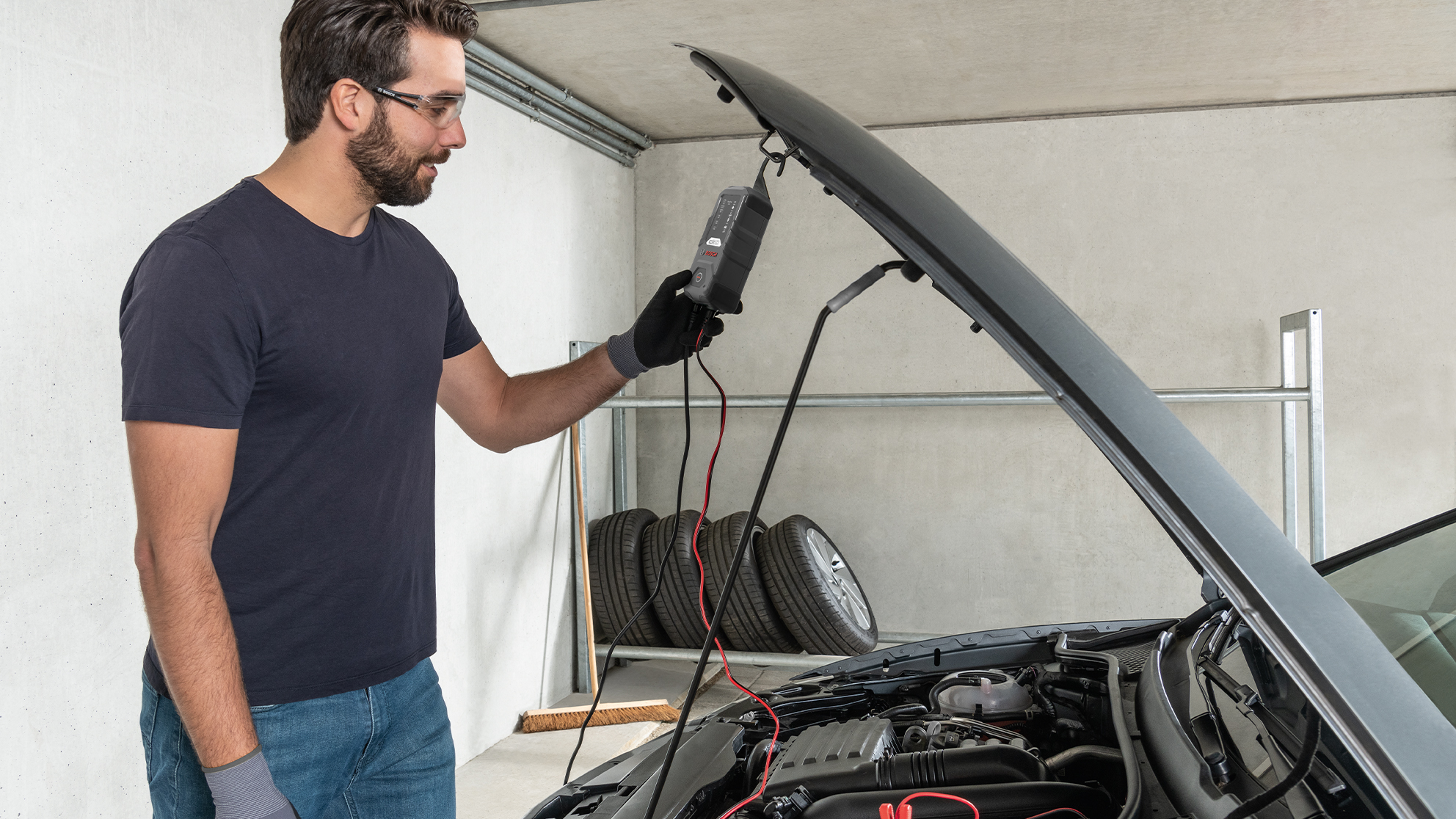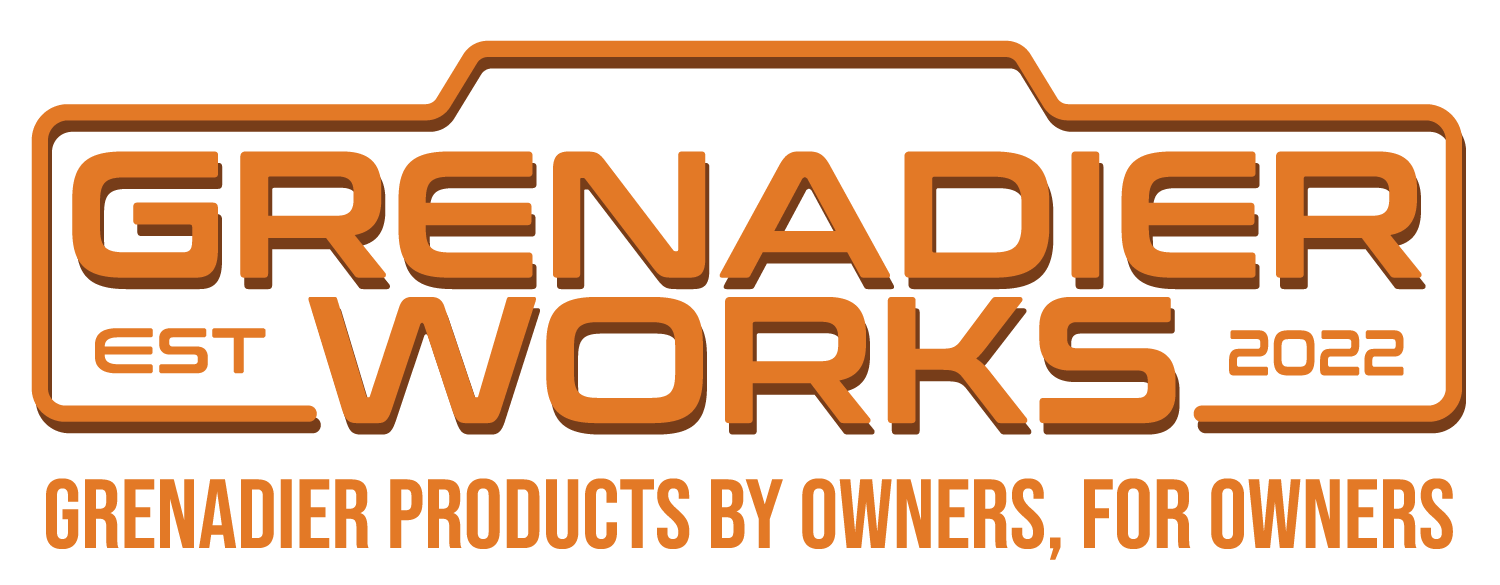I’m interested to hear because looking on line from different manufacturers it seems you can charge anywhere between 14.3v and 14.7v. I had a message back from my dealers and they said to charge the batteries on the regular setting.Yes, Setting 2 is the default, and likely correct choice. I’ll see what Victron say.
The Grenadier Forum
Register a free account today to become a member! Once signed in, you'll be able to contribute to the community by adding your own topics, posts, and connect with other members through your own private inbox! INEOS Agents, Dealers or Commercial vendors please use the contact us link at the bottom of the page.
You are using an out of date browser. It may not display this or other websites correctly.
You should upgrade or use an alternative browser.
You should upgrade or use an alternative browser.
I’ve just ordered my solar setup gear. 1 x 270 watt Photonic universe semi flexible solar panel.. 1x Victron 100/20 mppt controller and all the associated bits and pieces. The solar panel will be stuck on top of my Alucab roof. I went for the smaller Victron charge controller as I’m tight for space in the battery box. It’s has a maximum capacity of 290 watts so good enough for the size solar panel I’ve ordered. I’m going to fuse either side of the controller using maxi fuse holders.Yes, Setting 2 is the default, and likely correct choice. I’ll see what Victron say.
Seems Victron support is well hidden behind non-phone communication. I submitted support ticket.
Here is the active screen showing voltages.

Here is the active screen showing voltages.
In hindsight I could have used the 100/20 but didn’t have a good feeling on how much solar I will need or use. I also fused the controller from both sides.I’ve just ordered my solar setup gear. 1 x 270 watt Photonic universe semi flexible solar panel.. 1x Victron 100/20 mppt controller and all the associated bits and pieces. The solar panel will be stuck on top of my Alucab roof. I went for the smaller Victron charge controller as I’m tight for space in the battery box. It’s has a maximum capacity of 290 watts so good enough for the size solar panel I’ve ordered. I’m going to fuse either side of the controller using maxi fuse holders.
Here is the reply. Victron forwards the inquiry to the their dealer that sold the product, so not a direct Victron reply.
To directly address your inquiry:
There does not exist any Victron preset for EFB batteries; your best option is to locate the user and installation manual for your batteries to find the recommended charging parameters for them, and then select either the preset that most closely matches them or, more preferably, use the VictronConnect app to set your own custom charging profile to ensure that the batteries are being appropriately charged.
The EFB chemistry is not widely used -in fact this is the first time we've ever heard of any OEM system using them- so we unfortunately have zero background to go off of to make recommendations for you, thus our suggestion to revert to your battery user manual for their charge recommendation. In theory position 2 on the rotary switch should be relatively safe, but absolutely refer to your battery manual be sure!
To directly address your inquiry:
There does not exist any Victron preset for EFB batteries; your best option is to locate the user and installation manual for your batteries to find the recommended charging parameters for them, and then select either the preset that most closely matches them or, more preferably, use the VictronConnect app to set your own custom charging profile to ensure that the batteries are being appropriately charged.
The EFB chemistry is not widely used -in fact this is the first time we've ever heard of any OEM system using them- so we unfortunately have zero background to go off of to make recommendations for you, thus our suggestion to revert to your battery user manual for their charge recommendation. In theory position 2 on the rotary switch should be relatively safe, but absolutely refer to your battery manual be sure!
So position two for now. I am still awaiting the charging profile from IneosHere is the reply. Victron forwards the inquiry to the their dealer that sold the product, so not a direct Victron reply.
To directly address your inquiry:
There does not exist any Victron preset for EFB batteries; your best option is to locate the user and installation manual for your batteries to find the recommended charging parameters for them, and then select either the preset that most closely matches them or, more preferably, use the VictronConnect app to set your own custom charging profile to ensure that the batteries are being appropriately charged.
The EFB chemistry is not widely used -in fact this is the first time we've ever heard of any OEM system using them- so we unfortunately have zero background to go off of to make recommendations for you, thus our suggestion to revert to your battery user manual for their charge recommendation. In theory position 2 on the rotary switch should be relatively safe, but absolutely refer to your battery manual be sure!
In the interim, the Moll EFB tech spec says to charge at 14.4v. The maximum charge voltage is 14.8v. It also says to completely disconnect the battery from the vehicle before chargingSo position two for now. I am still awaiting the charging profile from Ineos
View attachment 7908256
Attachments
I will be adding the charging profiles, of different chargers, to the links. Draft currently reads:
I have also asked REDARC what profile to use on their DC to DC chargers.
ELECTRICS/BATTERY/CHARGING PROFILE/EFB: EFB is the battery chemistry of the OEM MOLL battery. The CTEK 120S and 2540SE has an EFB charging profile. Victron do not have an EFB charging profile, so either create a custom profile or use XXXXX (as recommended by Victron here).
I have also asked REDARC what profile to use on their DC to DC chargers.
Last edited:
Wow that makes it difficult for all those that have added solar or use trickle chargers. I’ll make a wild guess that Ineos agents don’t disconnect the batteries when doing maintenance charges of the Grenadiers at their yard.In the interim, the Moll EFB tech spec says to charge at 14.4v. The maximum charge voltage is 14.8v. It also says to completely disconnect the battery from the vehicle before charging
INEOS dealers do not disconnect the batteries, from what I saw at my last visit. They just clip the chargers to the "battery posts" under the bonnet (aka the jump starting connections, Figure 17 Rok Dr Guide).Wow that makes it difficult for all those that have added solar or use trickle chargers. I’ll make a wild guess that Ineos agents don’t disconnect the batteries when doing maintenance charges of the Grenadiers at their yard.
My solar panel has been connected for over 12 months without any issues. My car has a CTEK120S mated with the 250SE.
Last edited:
I only shared that as full disclosure from the Moll doc. I wouldn't do anything different if you're using a quality smart charger.Wow that makes it difficult for all those that have added solar or use trickle chargers. I’ll make a wild guess that Ineos agents don’t disconnect the batteries when doing maintenance charges of the Grenadiers at their yard.
That makes no sense for a vehicular battery.Wow that makes it difficult for all those that have added solar or use trickle chargers. I’ll make a wild guess that Ineos agents don’t disconnect the batteries when doing maintenance charges of the Grenadiers at their yard.
Thankyou. I couldn’t remember battery manufacturer so didn’t look up Molle. I blame the pain relief for addling my brain.I only shared that as full disclosure from the Moll doc. I wouldn't do anything different if you're using a quality smart charger.
The most relevant bit for me is the recommended charge voltage of 14.4 volts and as I’ve got Victron chargers will be the normal/default setting.
Still interested to see what Ineos say.
I dont remember this topic coming up before ? Although it must have with well over two years of ownership for many owners.
Interestingly I went out last year to test a new Sea-Legs boat and took delivery of it for my employer. That has AGM batteries and a Victron smart charger and was told then to use it on the normal setting.
Aside from the equalize feature (which is off by default) there isn’t a huge voltage variation between the preset battery settings.Thankyou. I couldn’t remember battery manufacturer so didn’t look up Molle. I blame the pain relief for addling my brain.
The most relevant bit for me is the recommended charge voltage of 14.4 volts and as I’ve got Victron chargers will be the normal/default setting.
Still interested to see what Ineos say.
I dont remember this topic coming up before ? Although it must have with well over two years of ownership for many owners.
Interestingly I went out last year to test a new Sea-Legs boat and took delivery of it for my employer. That has AGM batteries and a Victron smart charger and was told then to use it on the normal setting.
Ineos answer. They recommend a Bosch C7 12v 7amp battery charger which has a six stage profile.
Not much info online and can’t find a new one for sale in the uk. Looking at the Bosch website for C line chargers and there is no C7 only starting with C10. Which charges at 14.7 volts.

 www.boschaftermarket.com
edit. The only difference i can see on the Victron kit is the absorption charge between 14.3 and 14.7 v on different AGM batteries.
www.boschaftermarket.com
edit. The only difference i can see on the Victron kit is the absorption charge between 14.3 and 14.7 v on different AGM batteries.
I’m still confused. Doing your own thing I guess
edit it seems the C7 has been superseded by the C10 so slightly out of date advice.
Not much info online and can’t find a new one for sale in the uk. Looking at the Bosch website for C line chargers and there is no C7 only starting with C10. Which charges at 14.7 volts.

Bosch C-Line battery charger
The new Bosch C-Line battery chargers: Now with higher performance and an extended range of functions. Five device variants for individual customer requirements.
I’m still confused. Doing your own thing I guess
edit it seems the C7 has been superseded by the C10 so slightly out of date advice.
Last edited:
I printed this so I could scan the bar code with my phone, which takes you to the below document. Interesting that is says,In the interim, the Moll EFB tech spec says to charge at 14.4v. The maximum charge voltage is 14.8v. It also says to completely disconnect the battery from the vehicle before charging
Charging Voltage: 14.4V to 14.8V, max. 15.0V for 12V batteries
Which charger profile to use has not come up, to my knowledge - at least for the EFB batteries (it has for Lithium aux batteries).I don't remember this topic coming up before ? Although it must have with well over two years of ownership for many owners.
Interestingly I went out last year to test a new Sea-Legs boat and took delivery of it for my employer. That has AGM batteries and a Victron smart charger and was told then to use it on the normal setting.
One reason is that an AGM profile would do a reasonable job in charging an EFB battery. A sealed lead profile could also do a partial job. It would take time for the issues to show themselves in this scenario, because in many cases these chargers using the wrong profile would still do a better job at charging than an alternator. People would blame the battery rather than the charging profile for poor perfromance or failure.
Setting this charger to Sealed Lead Acid covers SLA, AGM and EFB. So the charger must have some smarts to work out which profile to apply to distinguish between the 3 different battery chemistries. I have seen that before with BMPro chargers.Ineos answer. They recommend a Bosch C7 12v 7amp battery charger which has a six stage profile.
Not much info online and can’t find a new one for sale in the uk. Looking at the Bosch website for C line chargers and there is no C7 only starting with C10. Which charges at 14.7 volts.
edit. The only difference i can see on the Victron kit is the absorption charge between 14.3 and 14.7 v on different AGM batteries.
Bosch C-Line battery charger
The new Bosch C-Line battery chargers: Now with higher performance and an extended range of functions. Five device variants for individual customer requirements.www.boschaftermarket.com
I’m still confused. Doing your own thing I guess
edit it seems the C7 has been superseded by the C10 so slightly out of date advice.
That’s a good enough reason for me to get a Bosch smart charger than has the technology to charge EFB batteries.Which charger profile to use has not come up, to my knowledge - at least for the EFB batteries (it has for Lithium aux batteries).
One reason is that an AGM profile would do a reasonable job in charging an EFB battery. A sealed lead profile could also do a partial job. It would take time for the issues to show themselves in this scenario, because in many cases these chargers using the wrong profile would still do a better job at charging than an alternator. People would blame the battery rather than the charging profile for poor perfromance or failure.
Are you sure the Moll 82064 is the model installed in the Grenadier?In the interim, the Moll EFB tech spec says to charge at 14.4v. The maximum charge voltage is 14.8v. It also says to completely disconnect the battery from the vehicle before charging
Similar threads
- Replies
- 56
- Views
- 3K
- Replies
- 5
- Views
- 603
- Replies
- 4
- Views
- 361
- Replies
- 24
- Views
- 3K



